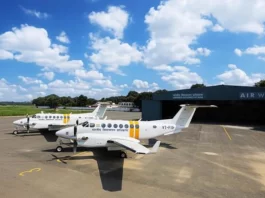The United States Global Strike Command says that on November 1, the United States Air Force was forced to destroy the LGM 30 Minuteman III intercontinental ballistic missile (ICBM) while it was undergoing a test launch because of the discovery of an anomaly.
According to the announcement, Space Launch Delta 30 Safety Office successfully destroyed the Minuteman III ICBM over the Pacific Ocean on November 1 at 00:06 Pacific Time. This was done in response to an anomaly during the test launch from the Vandenberg Space Force Base in California.
During the testing, the department observed that an anomaly could be defined as any unexpected occurrence. An in-depth investigation will be conducted, after which the particular reason for this anomaly will be identified.
To analyse what may have caused this, a Launch Analysis Group is being put together. Representatives from a variety of organisations, such as the Air Force Global Strike Command, the 377th Test and Evaluation Group, the 576th Flight Test Squadron, the Space Launch Delta 30 Safety Office, and the Air Force Nuclear Weapons Centre, will be part of this group.
According to the directives of the military agency, the intercontinental missile did not have a warhead attached to it and was disposed of securely.
With an initial capability set for 2029, the LGM-35A Sentinel will take the position of the cold war era Minuteman III ICBM. The release says that the US Air Force is committed to ensuring that the Minuteman III missile system continues to be an effective deterrent until full capability is attained in the middle of the 2030s.
The third launch of the Minuteman III test rocket occurred in September. After being launched into space, the test missile covered a distance of approximately 6,800 kilometres before coming to rest on a United States test range in the vicinity of the Kwajalein Atoll in the middle of the Pacific Ocean.
On September 6, one day before the test flight of an unarmed intercontinental ballistic missile, the press secretary for the Pentagon, US Air Force Brigadier General Patrick Ryder, revealed that Russia had been told in advance about the test launch of the missile. General Ryder emphasised that the readiness of the United States’ nuclear forces was the primary objective of these test launches, which were carried out to demonstrate that readiness. He also mentioned then that such tests were routine and had been scheduled for several years in advance.
Barksdale Air Force Base in Louisiana, located in the town of Shreveport-Bossier City, is the headquarters of the Air Force Global Strike Command, a major command. The command is responsible for the management of the country’s three intercontinental ballistic missile wings, the entire bomber force of the Air Force, which includes the B-52, B-1, and B-2 wings, the Long Range Strike Bomber programme, the Air Force Nuclear Command, Control, and Communications systems, and the operational and maintenance support provided to organisations that are part of the nuclear enterprise. Approximately 33,700 personnel are assigned to two Numbered Air Forces, nine wings, two geographically separated squadrons, and one detachment within the continental United States. These professionals are then deployed to various areas across the world.



